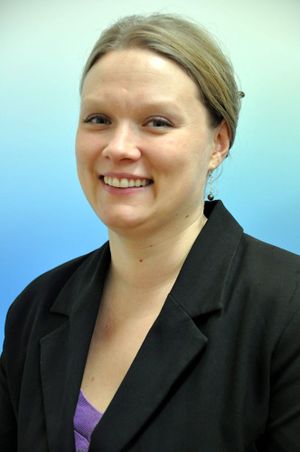Ero sivun ”Controlled Integration (dissertation)” versioiden välillä
Ortodoksi.netista
Ei muokkausyhteenvetoa |
Ei muokkausyhteenvetoa |
||
| Rivi 1: | Rivi 1: | ||
'''Controlled Integration: Displaced Orthodox Finns in Postwar Upper Savo (1946–1959)''' |
'''Controlled Integration: Displaced Orthodox Finns in Postwar Upper Savo (1946–1959)''' |
||
[[Kuva:Heli_kananen.jpg|thumb|<center>FM (Master of Science) Heli Kananen</center>]] |
[[Kuva:Heli_kananen.jpg|thumb|<center>FM (Master of Science) Heli Kananen</center>]] |
||
''Public examination of a doctoral dissertation in the field of |
''Public examination of a doctoral dissertation in the field of Finnish history''<br> |
||
''Doctoral candidate: Heli Kaarina Kananen''<br> |
''Doctoral candidate: Heli Kaarina Kananen''<br> |
||
''Date and venue: 27.11.2010, University of Jyväskylä, Seminaarinmäki, Historica, H320, Jyväskylä'' |
''Date and venue: 27.11.2010, University of Jyväskylä, Seminaarinmäki, Historica, H320, Jyväskylä'' |
||
Versio 19. marraskuuta 2010 kello 12.02
Controlled Integration: Displaced Orthodox Finns in Postwar Upper Savo (1946–1959)
Public examination of a doctoral dissertation in the field of Finnish history
Doctoral candidate: Heli Kaarina Kananen
Date and venue: 27.11.2010, University of Jyväskylä, Seminaarinmäki, Historica, H320, Jyväskylä
This study examines the process of the integration of displaced Orthodox Finns in postwar Upper Savo. Through the development of the situation in Upper Savo, it examines the question of how the evacuees adapted and were integrated back into Finnish society not only there but also in a broader context. It addresses the inconsistency between the so-called official version of Finnish history and the memories (oral history) of the evacuated Orthodox Karelians. Up to the end of 1990s, the official history portrayed the postwar era of reconstruction almost uniquely as a national success story, and opposing views and experiences were shut out. “Controlled Integration” offers a new perspective on the question of how Finnish society integrated the otherness that the displaced Orthodox Karelians represented for local communities and consequently also for the national community and collective identity.
The source material varies from oral history sources to the archives of the authorities that handled the integration at both the local and national levels. The study focuses on the conflict that occurred between the locals and the newcomers, after the latter had had to evacuate their homes and resettle in the remaining part of Finland. The conflict at the grass-roots level can also be understood as an expression of the need for homogeneity that the locals experienced when strangers representing the Orthodox other came into strongly Lutheran societies.
A study of how the actions of the local population determined the assimilative and integrative process constitutes the main subject of the beginning of this dissertation. However, the analysis is not limited to an examination of local official and unofficial methods of control. The perspective expands to take in the adaptation of the whole local community and the Finnish nation to the postwar situation, which at both the mental and physical levels had permanently altered from the one that existed before the war. It is noteworthy that the mental adaptation to the new situation progressed at the level of local and national collective identities. The integration of groups (the locals and the displaced Karelians) who were initially strange to each other and who were visualized by each other mainly through stereotypical definitions was facilitated not only by an increase in concrete cooperation but also by the construction of a sense of community and commonly shared features of identity and by identification with these.
(-> In Finnish)
